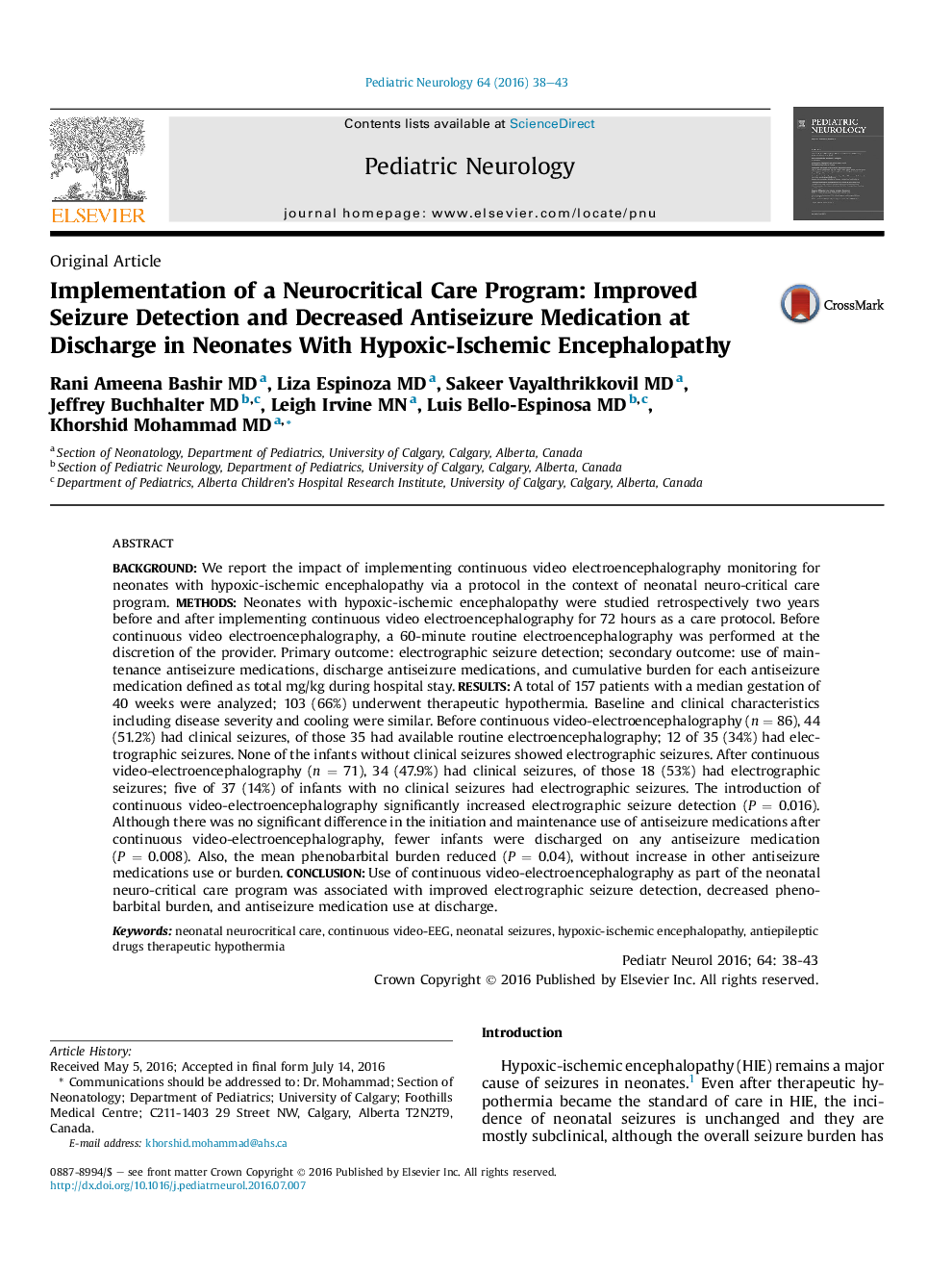| کد مقاله | کد نشریه | سال انتشار | مقاله انگلیسی | نسخه تمام متن |
|---|---|---|---|---|
| 5633008 | 1581262 | 2016 | 6 صفحه PDF | دانلود رایگان |
BackgroundWe report the impact of implementing continuous video electroencephalography monitoring for neonates with hypoxic-ischemic encephalopathy via a protocol in the context of neonatal neuro-critical care program.MethodsNeonates with hypoxic-ischemic encephalopathy were studied retrospectively two years before and after implementing continuous video electroencephalography for 72 hours as a care protocol. Before continuous video electroencephalography, a 60-minute routine electroencephalography was performed at the discretion of the provider. Primary outcome: electrographic seizure detection; secondary outcome: use of maintenance antiseizure medications, discharge antiseizure medications, and cumulative burden for each antiseizure medication defined as total mg/kg during hospital stay.ResultsA total of 157 patients with a median gestation of 40 weeks were analyzed; 103 (66%) underwent therapeutic hypothermia. Baseline and clinical characteristics including disease severity and cooling were similar. Before continuous video-electroencephalography (n = 86), 44 (51.2%) had clinical seizures, of those 35 had available routine electroencephalography; 12 of 35 (34%) had electrographic seizures. None of the infants without clinical seizures showed electrographic seizures. After continuous video-electroencephalography (n = 71), 34 (47.9%) had clinical seizures, of those 18 (53%) had electrographic seizures; five of 37 (14%) of infants with no clinical seizures had electrographic seizures. The introduction of continuous video-electroencephalography significantly increased electrographic seizure detection (P = 0.016). Although there was no significant difference in the initiation and maintenance use of antiseizure medications after continuous video-electroencephalography, fewer infants were discharged on any antiseizure medication (P = 0.008). Also, the mean phenobarbital burden reduced (P = 0.04), without increase in other antiseizure medications use or burden.ConclusionUse of continuous video-electroencephalography as part of the neonatal neuro-critical care program was associated with improved electrographic seizure detection, decreased phenobarbital burden, and antiseizure medication use at discharge.
Journal: Pediatric Neurology - Volume 64, November 2016, Pages 38-43
